
Virgin Islands vs Bahamas: 7 Stunning Differences to Know Before Your 2025 Caribbean Escape
Are you planning a Caribbean getaway? Choosing between the Virgin Islands and the Bahamas can be tricky since they offer different experiences despite both being beautiful island destinations. The Virgin Islands are mountainous and lush with dramatic landscapes, while the Bahamas feature flatter terrain with stunning white sand beaches and crystal clear waters.
The Virgin Islands, which include both the U.S. and British territories, have a more rugged, tropical feel reminiscent of Hawaii. Their hilly terrain creates breathtaking viewpoints and secluded coves perfect for snorkeling. The Bahamas, a collection of over 700 islands, offers a different charm with expansive beaches and vibrant coral reefs.
Both destinations provide amazing sailing opportunities, though with distinct characteristics. The British Virgin Islands feature shorter sailing distances between islands with protected waters, making them popular for island-hopping adventures. The Bahamas offer more open-water sailing with scattered cays and unique underwater cave systems not found in the Virgin Islands.
Contents [show]
Geographical Overview
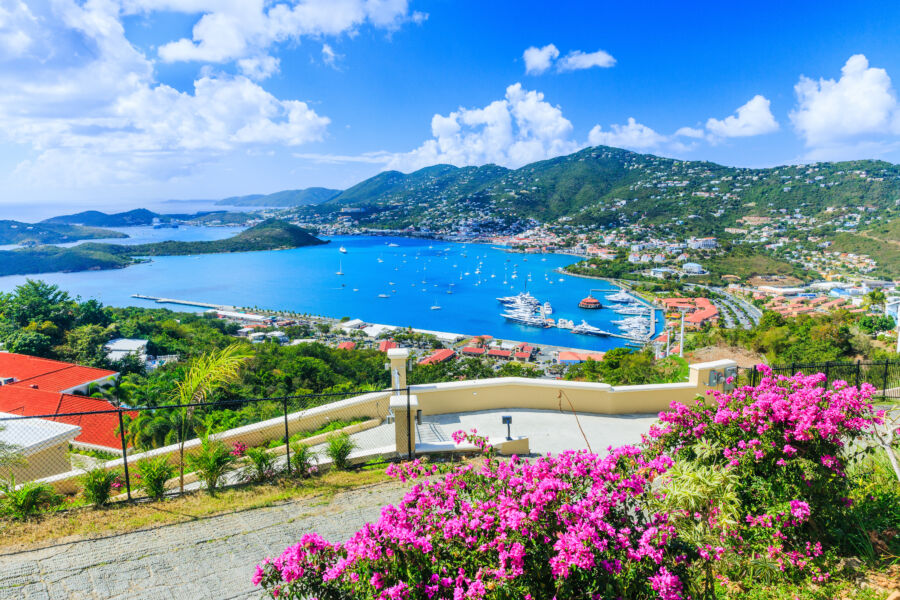
The Virgin Islands and the Bahamas showcase distinctly different geographical features despite both being popular Caribbean destinations. Their locations, land formations, coastlines, and natural environments offer travelers unique experiences shaped by their geological history.
Location in the Caribbean
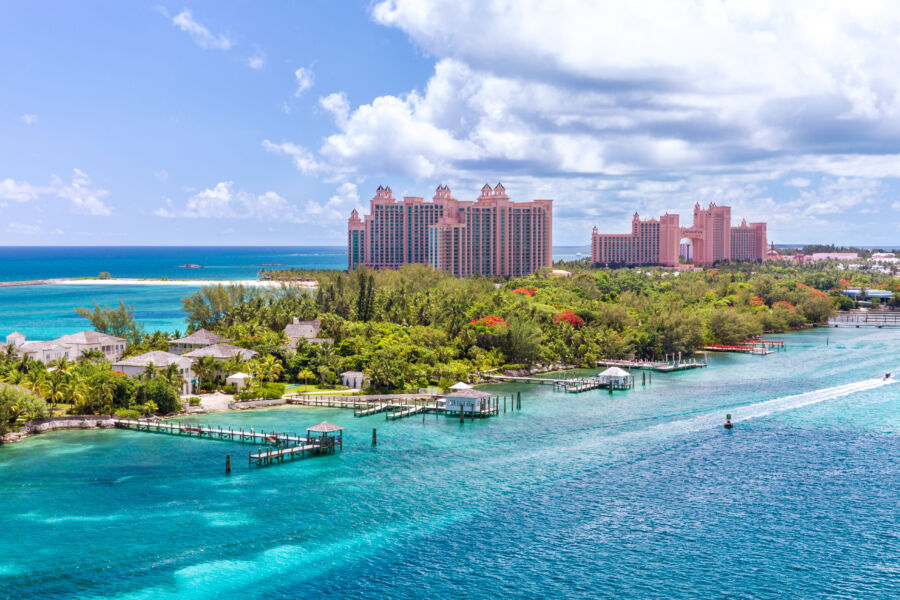
The Virgin Islands and the Bahamas are in different positions in the Caribbean region. The Virgin Islands (both British and U.S.) are in the northeastern Caribbean, forming part of the Leeward Islands chain. They’re nestled between the Caribbean Sea and the Atlantic Ocean, with Puerto Rico to their west.
The Bahamas, on the other hand, stretch across a much larger area in the northern Caribbean. This archipelago begins just 50 miles off Florida’s coast and extends southeast for over 500 miles. The Bahamas technically sits in the Atlantic Ocean rather than the Caribbean Sea, though it’s commonly grouped with Caribbean destinations.
This positioning gives the Bahamas more proximity to the U.S. mainland, making it slightly more accessible for American travelers compared to the Virgin Islands.
Topography and Natural Beauty
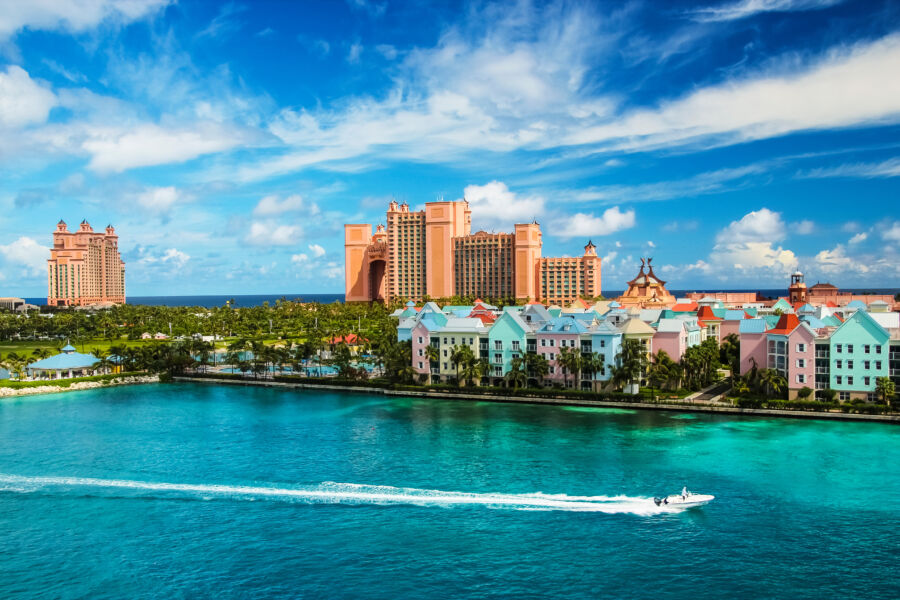
The Virgin Islands and Bahamas showcase dramatically different landscapes due to their distinct geological origins. The BVI features mountainous, volcanic islands with dramatic elevations, dense vegetation, and rugged coastlines. These islands rise significantly above sea level, with Tortola’s Mount Sage reaching about 1,700 feet.
The Bahamas presents a stark contrast with its flat, limestone-based islands. Most Bahamian islands rarely exceed 50-100 feet above sea level. What the Bahamas lacks in elevation, it makes up for with spectacular shallow waters. The Exumas and Abacos feature stunning turquoise shallows with vibrant sandbars visible from space.
The coastline comparison shows another key difference—the Bahamas boasts over 3,500 km of coastline compared to just 188 km in the Virgin Islands. This extensive Bahamian shoreline creates countless beaches, coves, and secluded spots for travelers to explore.
History and Culture
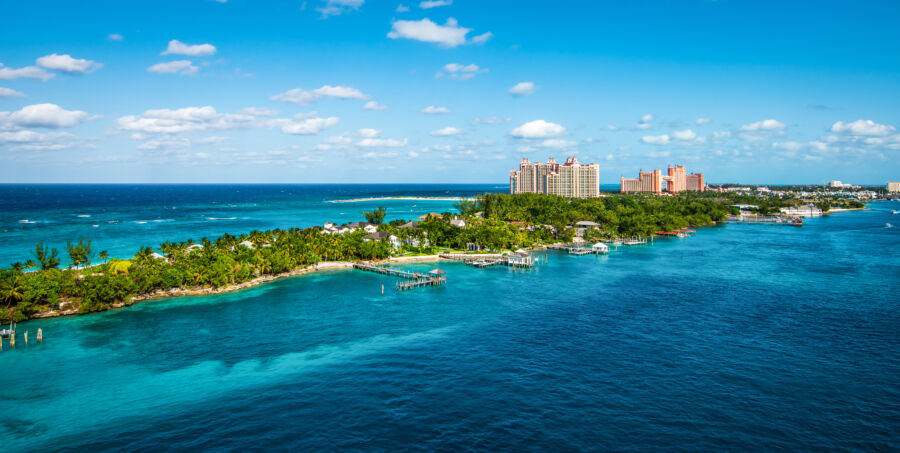
Both the Virgin Islands and the Bahamas have fascinating histories shaped by European colonization and diverse cultural influences. These island destinations have evolved unique traditions and celebrations that reflect their complex past and vibrant present.
Colonial History

The Bahamas was first colonized by British settlers known as the Eleutherian Adventurers in the mid-1600s. These islands became a haven for pirates during the “Golden Age of Piracy,” with infamous figures like Blackbeard roaming the waters. The Bahamas gained independence from Britain in 1973 but remains part of the Commonwealth.
The Virgin Islands have a more complex colonial past. The U.S. Virgin Islands (St. Thomas, St. John, and St. Croix) were initially colonized by the Danish who established sugar plantations worked by enslaved Africans. The United States purchased these islands in 1917 for $25 million.
The British Virgin Islands remained under British control and today exist as a British Overseas Territory. Both island groups were important stops on colonial trade routes and have changed hands between European powers several times throughout their history.
Local Traditions
Local traditions in both regions reflect a blend of African, European, and indigenous influences. In the Bahamas, “Junkanoo” is the heart of Bahamian culture—a street parade with music, dance, and colorful costumes that dates back to the days of slavery when enslaved people were given a rare holiday break.
The Virgin Islands embrace “quelbe” music, their traditional folk sound featuring handmade instruments like the “scratch band.” Storytelling remains important in both cultures, with tales of jumbies (spirits) and other folklore passed through generations.
Food traditions differ slightly too. Bahamian cuisine centers around seafood, especially conch, while Virgin Islands cooking features more “fungi” (cornmeal dish) and salt fish. Both places share a love for johnnycakes (fried bread) and tropical fruits incorporated into their cooking.
Cultural Festivals
The Bahamas hosts the spectacular Junkanoo parade every December 26 and January 1, where competing groups vie for prizes with elaborate costumes and music. The islands also celebrate the Goombay Summer Festival with rake-and-scrape music, dance, and food throughout July.
In the U.S. Virgin Islands, Carnival is the biggest cultural celebration. St. Thomas holds Carnival in April-May, St. John celebrates in June-July, and St. Croix has its Crucian Christmas Festival in December-January. These festivities feature calypso music competitions, food fairs, and colorful parades.
The British Virgin Islands’ most unique festival is the August Emancipation Festival, marking the 1834 freedom of enslaved people. Both island groups host sailing regattas that blend sporting events with cultural celebrations, reflecting their deep connection to the sea and maritime traditions.
Travel and Accessibility
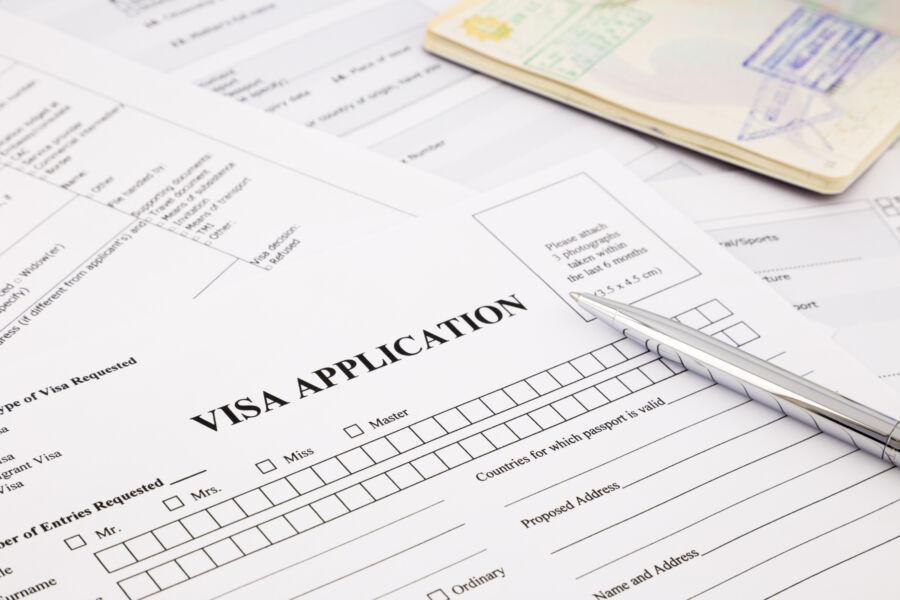
Getting to and around the Virgin Islands and Bahamas involves different requirements and considerations. Each destination offers unique travel experiences with varying entry procedures, transportation options, and optimal visiting seasons.
Entry Requirements and Visas
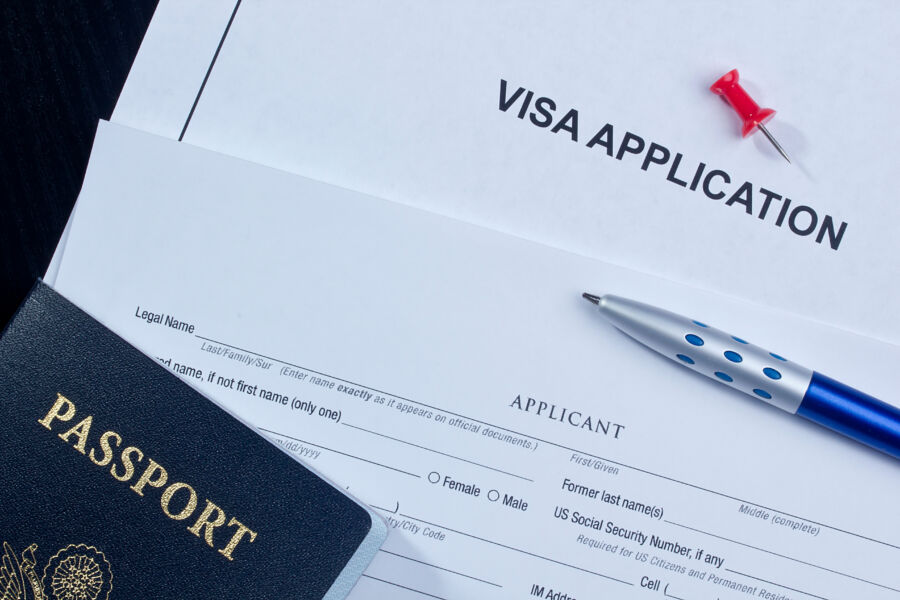
US citizens traveling to the USVI don’t need a passport since it’s a US territory. Just bring a government-issued photo ID and birth certificate. This makes the USVI an easy choice for Americans seeking a Caribbean getaway without passport hassles.
US citizens need a valid passport to visit the Bahamas and BVI. The Bahamas allows Americans to visit for up to 90 days without a visa. The British Virgin Islands also permit visa-free entry for US citizens, but you’ll need to show proof of return travel and sufficient funds.
All destinations require proof of return or onward travel. Currency differences matter too—USVI uses the US dollar, while the Bahamas has its own dollar (pegged to USD), and BVI accepts both US dollars and British Virgin Islands dollars.
Transportation Options
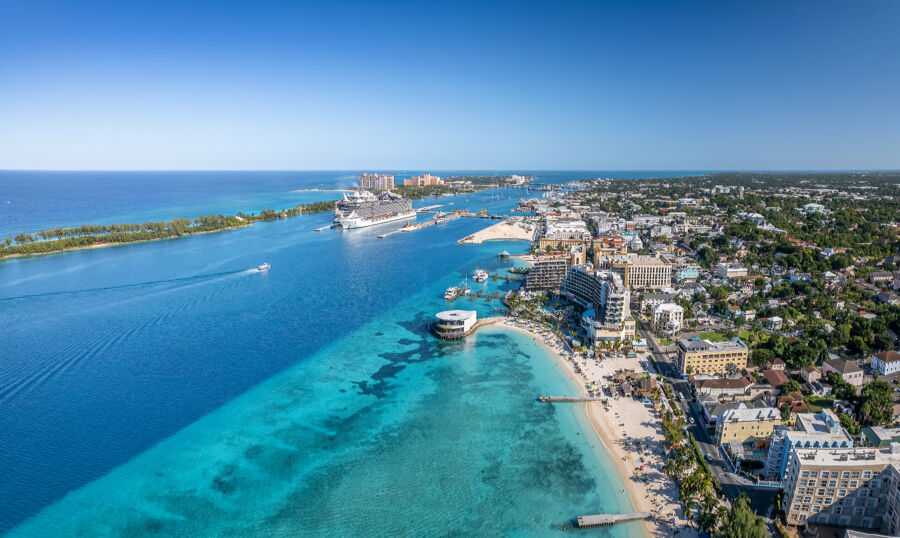
Getting around these island destinations varies significantly. The USVI, particularly St. Thomas, offers good accessibility with sidewalk ramps, flat town centers, and accessible van transportation for mobility-challenged travelers.
In the Bahamas, major islands like Nassau and Grand Bahama have taxis, rental cars, and some public transport. Inter-island travel typically requires flights or ferries.
The Virgin Islands’ mountainous terrain makes navigation more challenging than the flatter Bahamas. Taxis are widely available in tourist areas, but they can be expensive.
Bareboat charters are popular in both regions for water enthusiasts. The BVI is world-renowned for sailing, with its numerous sheltered anchorages and short distances between islands, making it a premier choice for sailing vacations.
Best Time to Visit

Climate differences affect the best times to visit. The Bahamas, being further north, gets cooler during winter months than the Virgin Islands. January temperatures in the Bahamas average 70-75°F, while the USVI and BVI stay around 80-85°F.
Hurricane season (June-November) affects both regions, with September-October being the highest-risk month. Many travelers prefer December-April for optimal weather, though this coincides with peak tourist season and higher prices.
For budget travelers, the shoulder seasons (May and November) offer a good balance of decent weather and lower costs. Tourism drops significantly during hurricane season, with many establishments offering substantial discounts—but some restaurants and attractions may close temporarily.
Water temperature remains pleasant year-round in both destinations, with the Virgin Islands typically staying a few degrees warmer than the Bahamas during winter months.
See Related: Jamaica vs St. Lucia: Stunning Differences to Know Before Your Caribbean Escape
Activities and Attractions

The Virgin Islands and the Bahamas offer spectacular activities catering to different interests. From water-based adventures to land explorations, visitors can enjoy a variety of experiences depending on their preferences and the unique characteristics of each destination.
Water Sports and Beaches
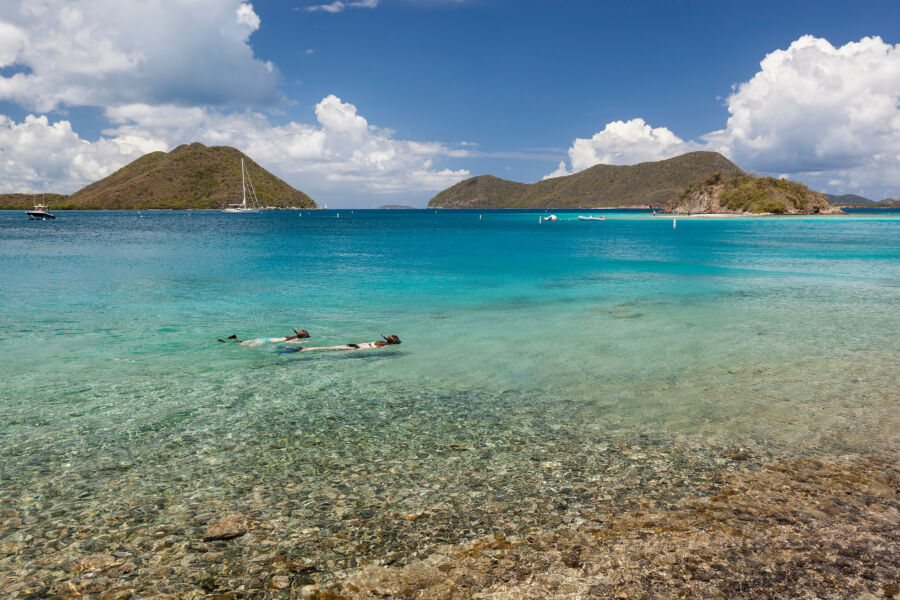
The Bahamas and Virgin Islands both boast crystal-clear waters perfect for water activities. The Bahamas offers exceptional snorkeling opportunities with its vast coral reefs and marine life. Nassau and the Out Islands feature numerous spots where beginners and experts can explore underwater worlds.
St. John in the Virgin Islands provides a different snorkeling experience with its mountainous underwater landscape. The water tends to be calmer in many Virgin Islands bays, making them ideal for paddleboarding and swimming.
Sailing is particularly popular in both destinations. The Virgin Islands are known as one of the world’s premier sailing destinations due to their close proximity to each other, making island hopping convenient. Many visitors opt for day charters or longer sailing adventures between islands.
Both locations offer plenty to enjoy for fishing enthusiasts. The Bahamas is famous for bonefishing in its shallow flats, while the Virgin Islands offer excellent deep-sea fishing for marlin, tuna, and mahi-mahi.
Hiking and Exploration

The terrain differences between these destinations create distinct exploration experiences. With its mountainous and lush landscape, St. John offers numerous hiking trails through Virgin Islands National Park, which covers about 60% of the island. Visitors can discover ancient petroglyphs, sugar mill ruins, and breathtaking viewpoints.
The Bahamas, being relatively flat, offers different exploration opportunities. Nature reserves and blue holes (underwater cave systems) provide unique adventures. Lucayan National Park in Grand Bahama features one of the longest underwater cave systems in the world.
The Virgin Islands’ volcanic origins have created interesting geological features to explore. The “drive-through volcano” mentioned in search results likely refers to similar formations found in the Caribbean, where visitors can witness volcanic activity up close.
Both destinations offer opportunities to explore local culture and history through tours and heritage sites showcasing their colonial past and cultural development.
Nightlife and Events

The Bahamas, especially Nassau and Paradise Island, offers a vibrant nightlife with casinos, clubs, and beach bars. Atlantis Resort hosts regular events and entertainment options. During major holidays like Junkanoo (December 26 and January 1), the streets come alive with colorful parades and music.
The Virgin Islands tends to have a more laid-back nightlife scene. Beach bars and local restaurants often feature live music, particularly reggae and calypso. St. Thomas offers the most active nightlife in the USVI, with various bars and small clubs in Charlotte Amalie.
Both destinations host fishing tournaments, sailing regattas, and cultural festivals throughout the year. The Bahamas’ Family Island Regatta in the Exumas is one of the oldest regattas in the Caribbean, while the Virgin Islands celebrates Carnival with food fairs, parades, and music.
Resort areas in both locations organize regular activities for guests, from beach bonfires to themed party nights that showcase local traditions and cuisine.
Accommodations and Lodging

When comparing places to stay in the Virgin Islands and Bahamas, you’ll find a range of options fitting different budgets and travel styles. Both destinations offer luxury resorts, private villas, and more economical choices for travelers seeking a tropical paradise.
Resorts and Hotels

The U.S. Virgin Islands, especially St. Thomas, feature several high-end resorts with stunning ocean views and full amenities. Many properties offer all-inclusive packages, though they tend to be pricier than mainland destinations. St. John has fewer but more exclusive resort options that blend into the natural surroundings.
The Bahamas boasts world-famous resorts, particularly in Nassau and Paradise Island. The Atlantis resort is perhaps the most recognized, offering casinos, water parks, and multiple dining options. Freeport provides more moderate accommodations for budget-conscious travelers at around $290 per day ,according to traveler data.
British Virgin Islands resorts are typically boutique-style and exclusive, catering to travelers seeking privacy and luxury. Several resorts offer beachfront accommodations with easy access to sailing and water activities.
Private Villas and Rentals
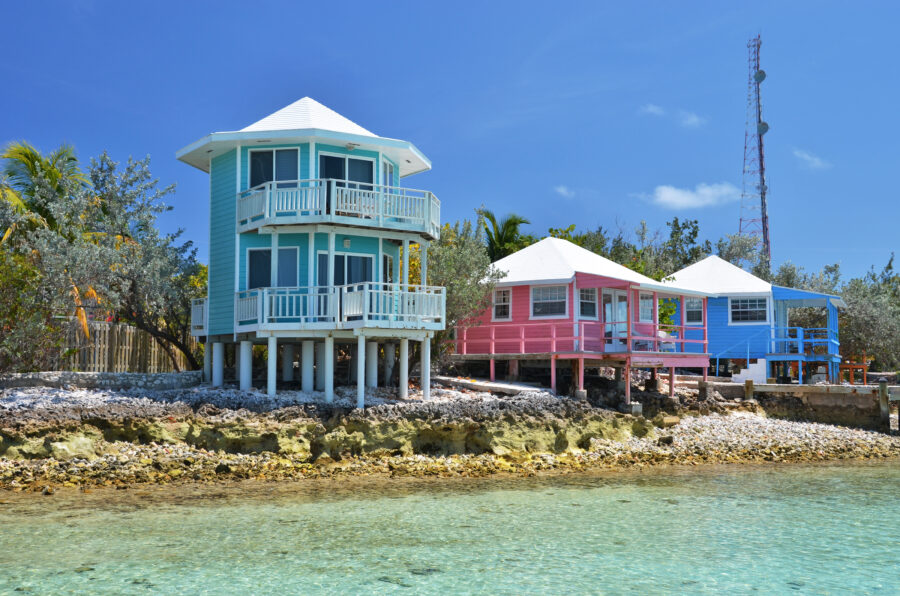
Villa rentals offer excellent value in both regions, especially for families or groups. In St. John and the BVI, luxury hotels often cost more than villa rentals while offering less space and privacy. Many include private pools and stunning views.
The Bahamas offers a wide range of rental properties, from modest apartments to luxurious beachfront estates. Rentals in less touristy islands like Eleuthera or Exuma provide authentic experiences at lower rates than Nassau.
Many villas in both destinations come with the option to hire private chefs or housekeeping staff. Properties near marinas are particularly popular among sailing enthusiasts, providing easy access to boating activities.
Camping and Eco-Lodging
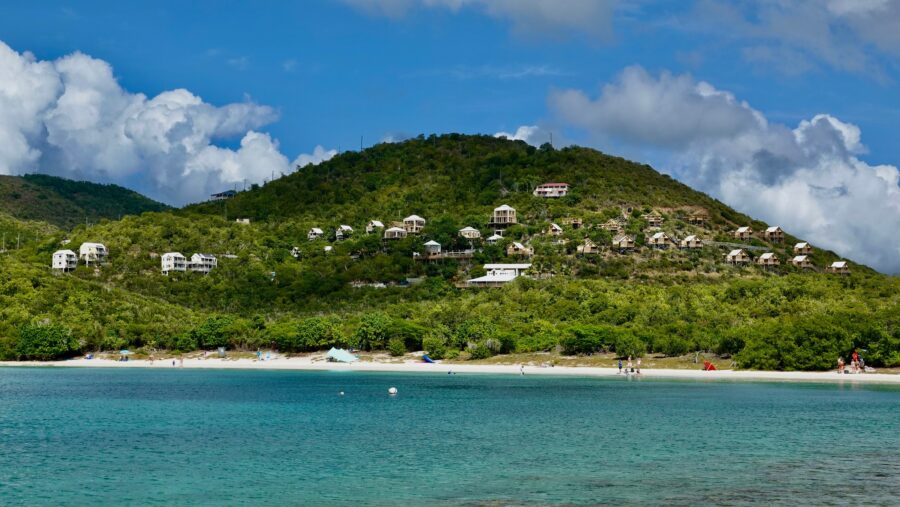
The U.S. Virgin Islands, particularly St. John, offers exceptional eco-lodging options. Concordia Eco-Resort and Cinnamon Bay provide sustainable accommodations that immerse visitors in nature. The Virgin Islands National Park has designated camping areas with basic facilities.
The Bahamas has fewer formal camping options but feature several eco-resorts on its Out Islands. These properties typically use solar power, collect rainwater, and employ sustainable practices while providing comfortable accommodations.
For boaters, both regions offer numerous anchorages where you can sleep aboard while enjoying pristine surroundings. The BVI’s North Sound is a popular spot, offering protected waters and access to several resorts and restaurants by dinghy.
Dining and Cuisine
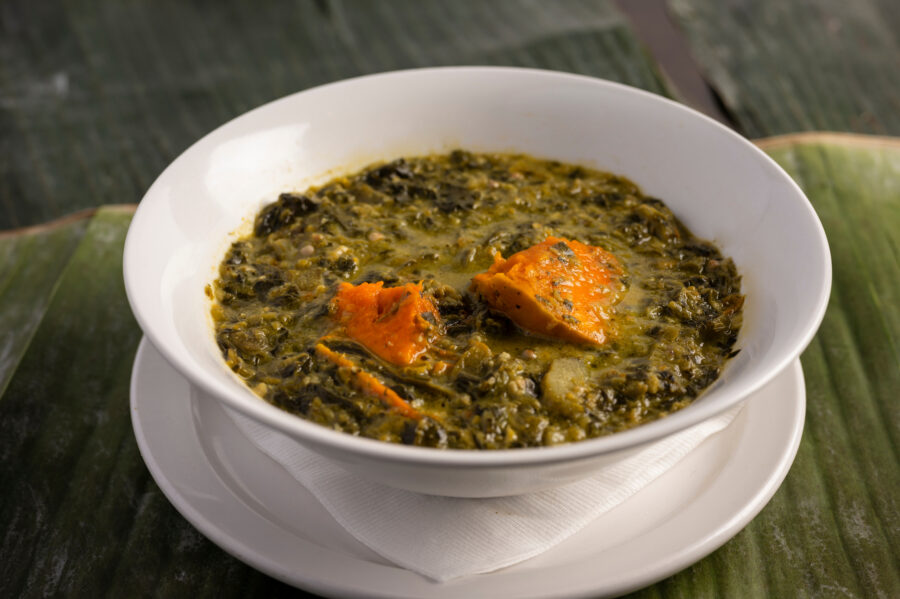
Both the Virgin Islands and the Bahamas offer incredible culinary experiences that reflect their unique cultural influences and access to fresh seafood. The food scene in both destinations ranges from casual beachside eateries to upscale restaurants, with distinct local flavors that tell the story of each island’s heritage.
Local Delicacies
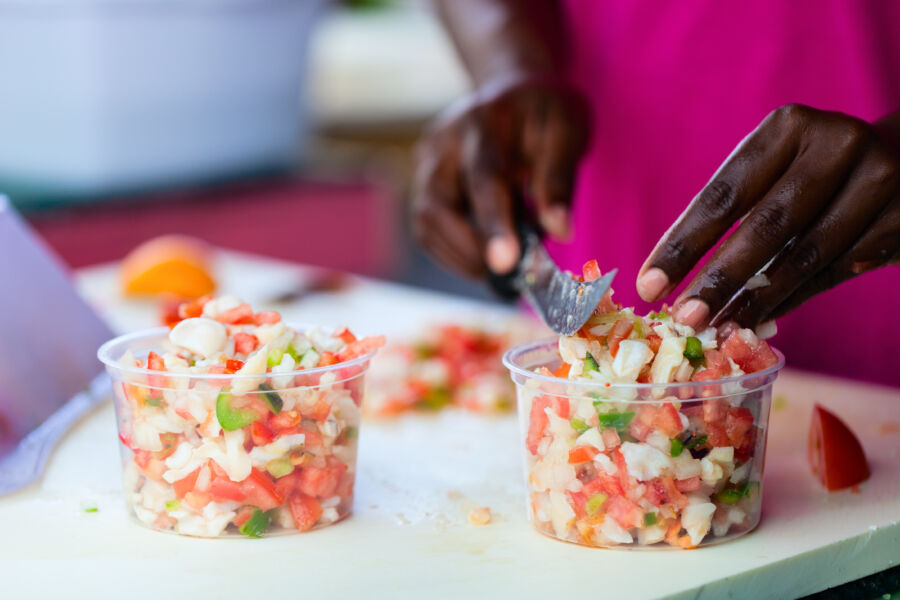
The Virgin Islands cuisine blends West African, European, and indigenous influences to create unique dishes you won’t find elsewhere. Fungi (pronounced “foon-ji”), a cornmeal-based side dish similar to polenta, often accompanies fish or meat dishes. Don’t miss callaloo, a hearty soup made with leafy greens that’s considered a VI staple.
The Bahamas has its own seafood specialties. Conch is king here—served as fritters, in salads, or as “scorched conch” with lime and spices. You’ll also find johnnycakes (a type of bread) and rock lobsters on many menus.
Both destinations excel in preparing fresh-caught fish. In the Virgin Islands, look for wahoo or mahi-mahi, while Bahamian restaurants often feature grouper and snapper prepared with local seasonings.
Fine Dining Experience
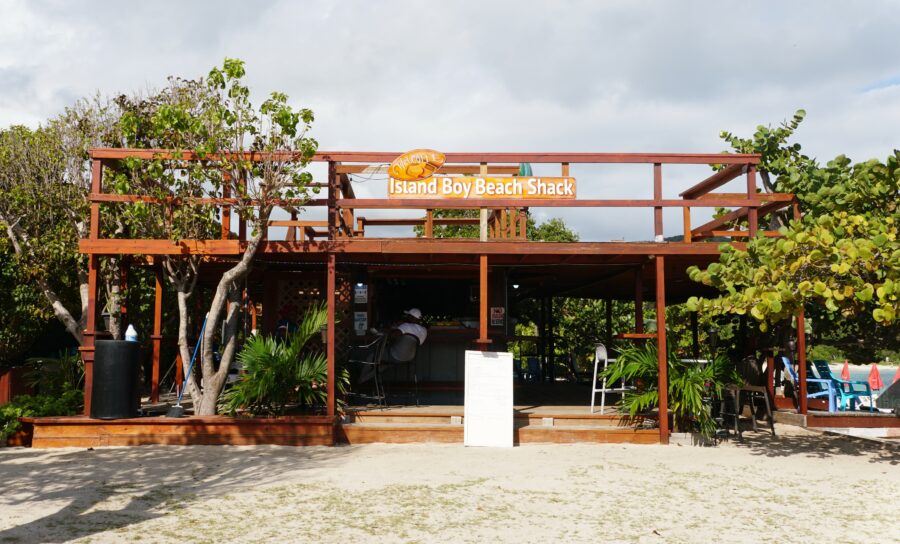
The Virgin Islands boasts more mountainous terrain, creating stunning hillside restaurants with spectacular views. Many upscale eateries blend Caribbean flavors with international techniques. Expect to pay premium prices at these establishments, but the combination of scenery and cuisine often justifies the cost.
The Bahamas, particularly Nassau and Paradise Island, offers celebrity chef restaurants and resort dining experiences. The fine dining scene here tends to be more international, though many high-end places incorporate local ingredients in creative ways.
Both destinations have similar price points for upscale dining. According to search results, a basic meal at an inexpensive restaurant in the Bahamas costs around $30, with the Virgin Islands being about 4.7% less expensive overall for restaurant dining.
Market and Street Food
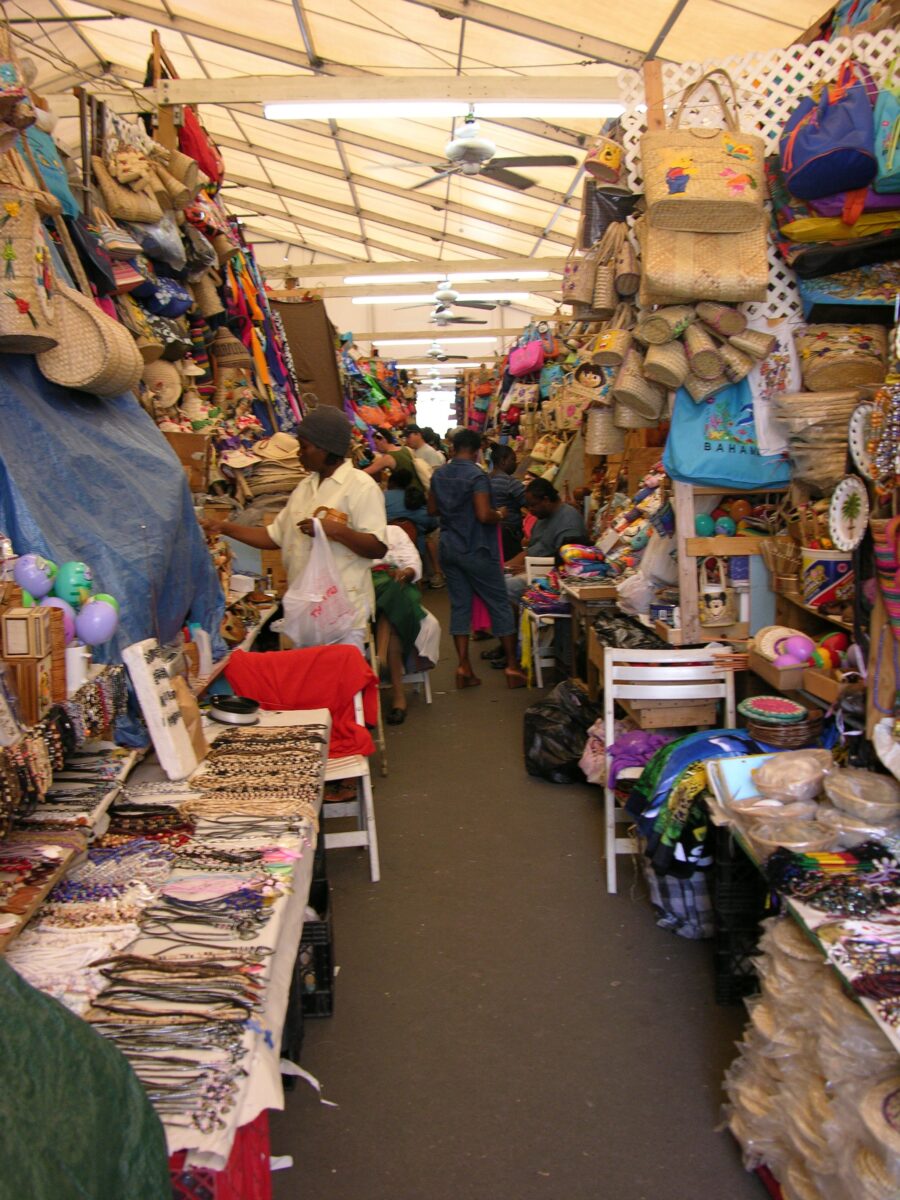
Street food in the Virgin Islands often centers around food trucks and roadside stands. Local favorites include johnny cakes filled with salt fish, pates (fried pastries with savory fillings), and grilled chicken or fish plates. Many vendors set up near popular beaches, making it easy to grab a quick, affordable meal.
The Bahamas shines with its fish fry experiences, where multiple vendors serve freshly caught seafood in casual outdoor settings. Nassau’s Arawak Cay (known as “Fish Fry”) is a must-visit spot where you can sample conch salad prepared right before your eyes.
Both destinations have local markets where you can find fresh fruits, spices, and handmade food products. These markets provide an authentic taste of island life and are much more budget-friendly than restaurants. Don’t be afraid to chat with vendors—they often share the best tips on how to enjoy their products!
Sailing and Charter Options
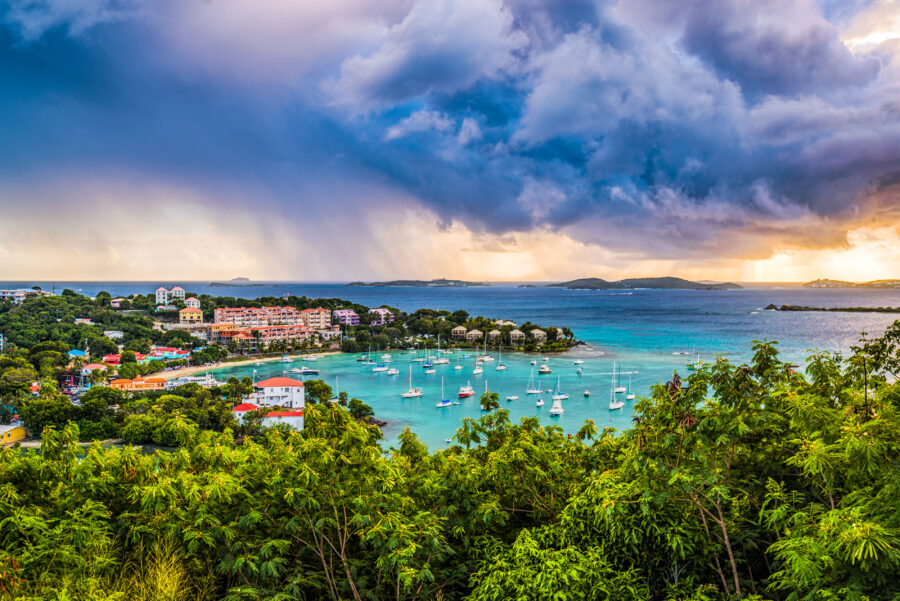
Both the Virgin Islands and the Bahamas offer amazing sailing experiences with different advantages. The type of charter, sailing conditions, and available services can make or break your Caribbean adventure.
Yacht Charters and Cruises
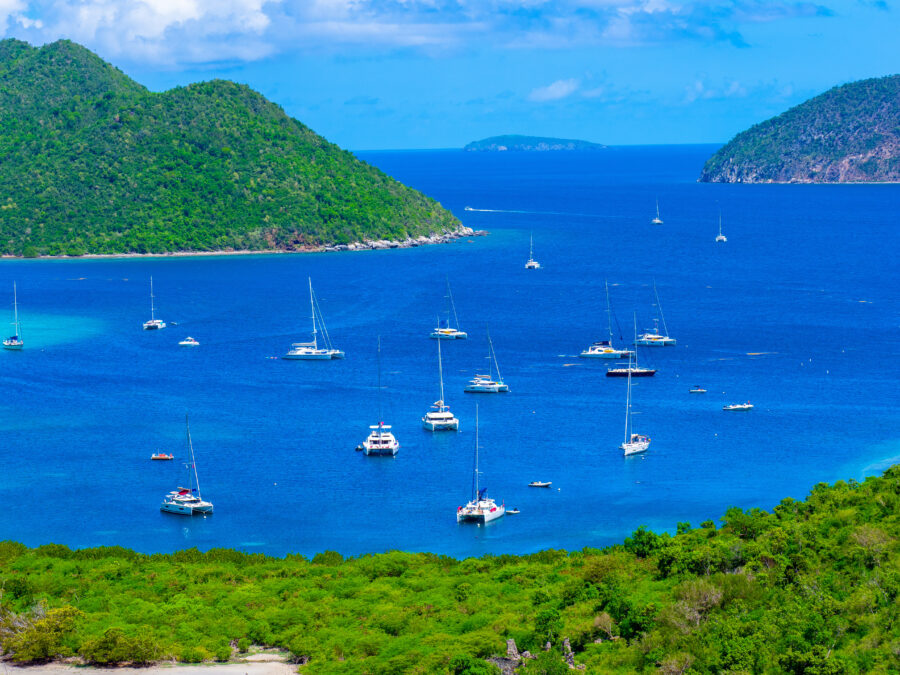
The BVI is often called the “sailing capital of the Caribbean” for good reason. Major charter companies like The Moorings and Dream Yacht Charter have extensive fleets here with options ranging from bareboat (no crew) to fully crewed luxury yachts. Prices tend to be higher during peak season (December-April).
The Bahamas offers similar charter options but with a different sailing experience. Charter companies are more spread out across the islands, with concentrations in Nassau and the Abacos. Due to navigation challenges, bareboat charters in the Bahamas typically require more sailing experience than in the BVI.
For beginners, the BVI’s well-marked channels and shorter distances between islands make it more forgiving. The Bahamas demands better navigation skills, especially around shallow reefs.
Sailing Itineraries

BVI sailing routes typically follow a counterclockwise loop around Tortola, visiting islands like Norman, Peter, and Virgin Gorda. Most destinations are within a 2-3 hour sail of each other, making for relaxed day trips between anchorages. Popular stops include The Baths on Virgin Gorda and the beach bars of Jost Van Dyke.
Bahamas itineraries vary widely depending on which island group you’re exploring. The Abacos offer a protected cruising ground similar to the BVI but spread over a larger area. The Exumas provide a more adventurous sailing experience with stunning beaches and the famous swimming pigs at Big Major Cay.
Weather conditions differ, too. The BVI has more predictable trade winds, while the Bahamas can experience stronger winter fronts that might interrupt your sailing schedule.
Marina Services
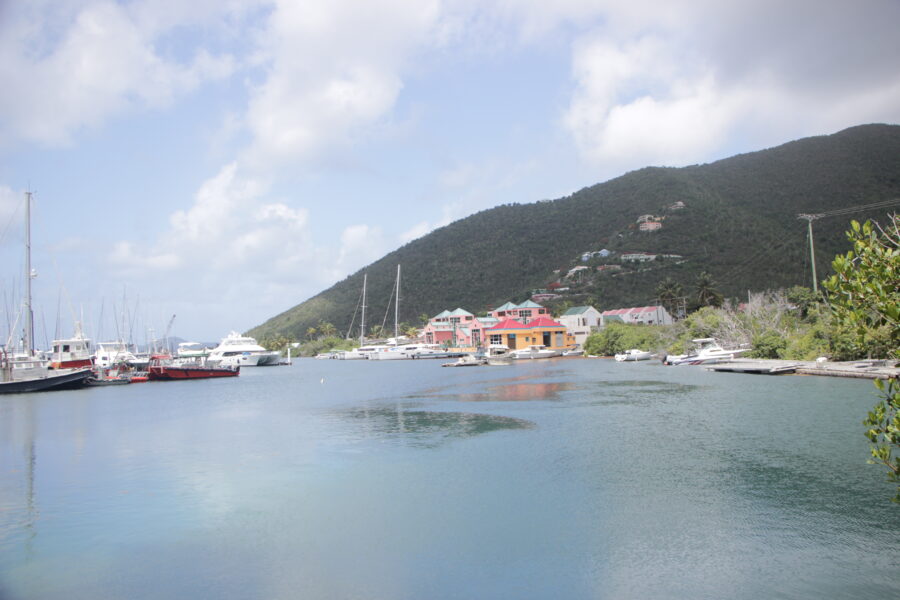
The BVI boasts extensive marina infrastructure designed specifically for the charter industry. Most harbors offer mooring balls (though they fill quickly in high season), and marinas like Nanny Cay provide comprehensive services including fuel, provisions, and repairs.
The Bahamas has fewer formal marinas but more natural anchorages. Services vary widely between developed islands like Nassau and remote areas of the Exumas. Many Bahamian harbors use a mix of mooring fields and anchoring areas.
Provisioning is easier in the BVI with well-stocked grocery stores catering to sailors. In the Bahamas, you’ll need to plan more carefully as some islands have limited shopping options. However, the Bahamas offers more opportunities for truly secluded anchorages away from other boats.
See Related: Best Vacation Destinations for Singles Over 40
Environmental Conservation

Both the Virgin Islands and the Bahamas have taken significant steps toward protecting their marine ecosystems. These Caribbean paradises recognize that their natural beauty is both their greatest asset and their most fragile resource.
Preserving Natural Habitats
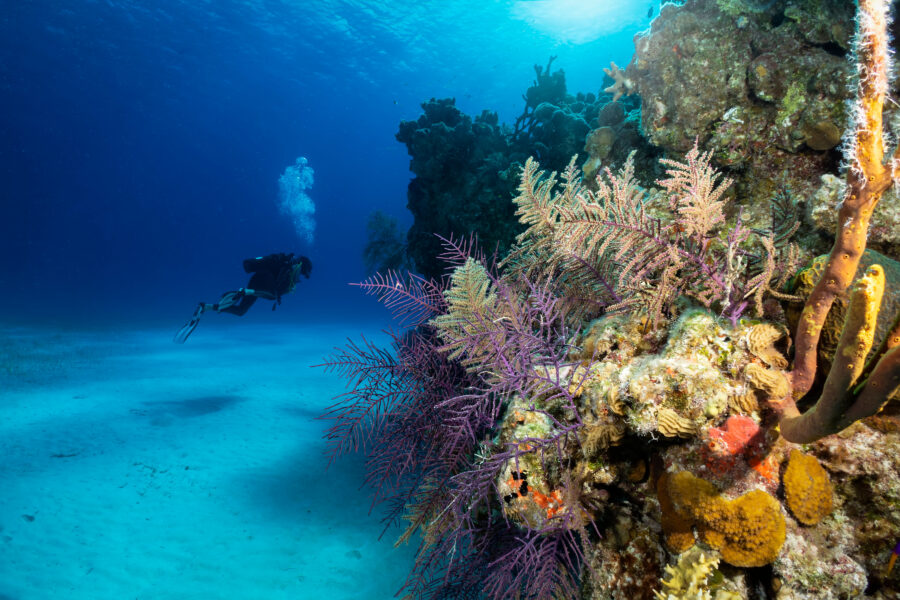
The Bahamas stands out as a regional leader in ocean conservation, with 10% of its waters designated as marine protected areas. These protected zones help preserve coral reefs, fish populations, and other marine life that make the islands a world-class snorkeling destination.
The Virgin Islands features a unique Coral Hub where scientists test new coral restoration techniques. This innovation is crucial as Caribbean reefs face threats from climate change and human activity.
Both destinations are part of a rich Caribbean ecosystem that includes about 10% of the world’s coral reefs. These reefs aren’t just beautiful—they’re vital habitats for countless marine species and natural buffers against storm damage.
Responsible Tourism
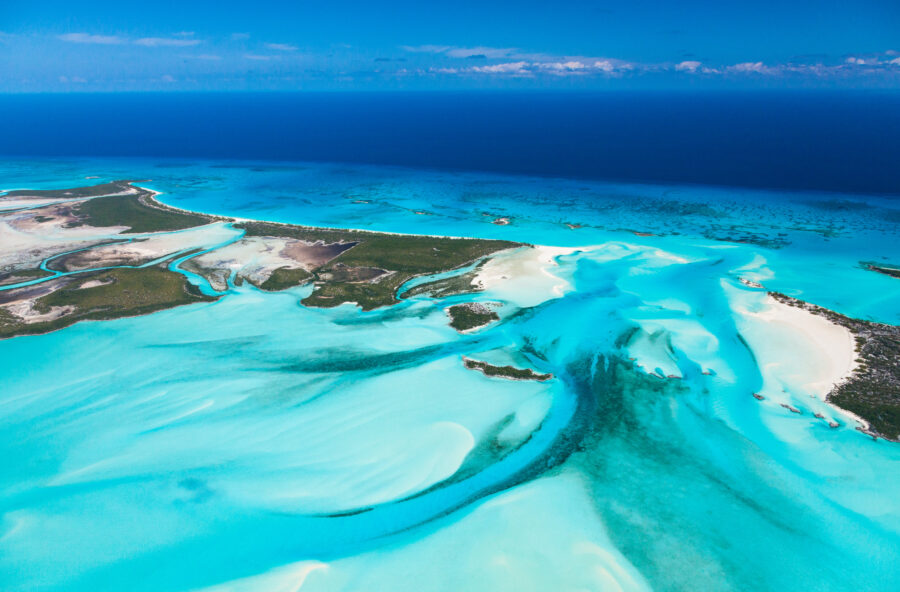
Visitors to both destinations can enjoy activities like snorkeling and fishing while supporting conservation. Many tour operators in the Bahamas and Virgin Islands now offer eco-friendly excursions that minimize environmental impact.
The geographical differences between these destinations influence their conservation approaches. The British Virgin Islands feature different land formations and vegetation compared to the Bahamas, requiring tailored protection strategies.
Tourist education is a priority in both regions. Visitors learn about reef protection, proper waste disposal, and wildlife interaction guidelines. Some resorts and tour companies donate a portion of their fees to local conservation efforts.
Smart travelers choose operators who emphasize “look but don’t touch” policies for marine life. Fishing enthusiasts can participate in sustainable catch-and-release programs that help scientists track fish populations while still enjoying the thrill of the catch.
Economic Factors
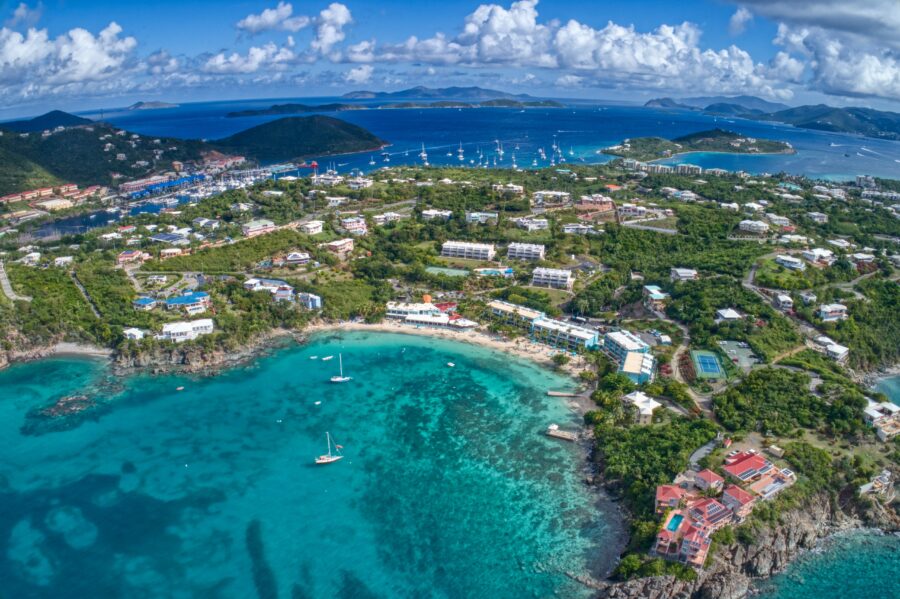
When comparing the Virgin Islands and the Bahamas, economic considerations play a crucial role in travel decisions. The financial aspects range from vacation costs to the underlying economic structures that shape the visitor experience in each destination.
Cost of Travel

The Bahamas tends to be more budget-friendly for travelers compared to the Virgin Islands. Hotel rates in the Bahamas often start around $150-300 per night for mid-range accommodations, while similar options in the Virgin Islands typically run $200-400 per night.
Food costs follow a similar pattern. A casual meal in the Bahamas might cost $15-25 per person, while the Virgin Islands restaurants charge $20-35 for comparable dining experiences.
Transportation expenses also differ significantly. The Virgin Islands, particularly the British Virgin Islands, have developed a reputation as a premium destination with prices to match. Many visitors to the BVI opt for yacht charters, which can cost $2,500-5,000 per week.
The Bahamas offers more diverse price points across its many islands. Nassau and Paradise Island feature luxury options, while Out Islands provide more affordable alternatives.
Local Economy and Employment
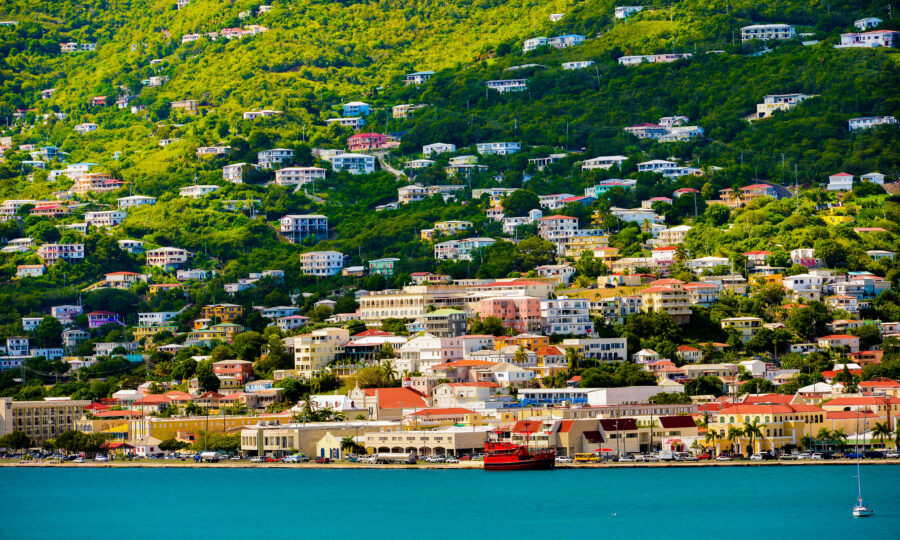
Tourism dominates both economies but with different structures. The Bahamas generates about 50% of its GDP from tourism, employing roughly 60% of the workforce either directly or indirectly in the sector.
The Virgin Islands economy shows interesting contrasts. The U.S. Virgin Islands has a GDP per capita of around $46,200 (as of 2021), while the Bahamas reports approximately $32,000 (2023). This difference reflects the USVI’s more diverse economic base.
Both destinations face similar economic challenges:
- Seasonal employment fluctuations
- Hurricane vulnerability
- Heavy reliance on tourist spending
The Bahamas has been working to expand its economic base through offshore banking and financial services. Recent growth projections show the Bahamas’ economy expanding by about 4.3%, driven primarily by post-pandemic tourism recovery.
The British Virgin Islands maintains a strong financial services sector alongside tourism, creating a more balanced economic portfolio than many Caribbean destinations.
Safety and Health Considerations
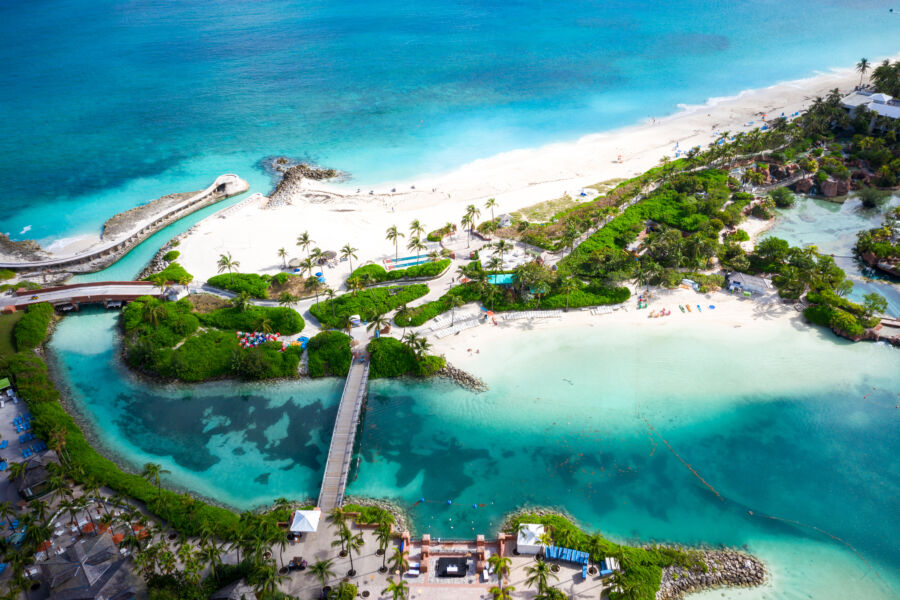
The Bahamas currently has a Level 2 travel advisory (“Exercise Increased Caution”) from the U.S. Department of State due to crime concerns. Most crime happens in Nassau (New Providence) and Freeport (Grand Bahama), with a crime rate of about 32 per 100,000 people.
The U.S. Virgin Islands generally have lower crime rates than the Bahamas, particularly in tourist areas. However, visitors should still take normal precautions in both destinations.
Both locations have good medical facilities in major tourist areas, but healthcare can be limited on smaller islands. Travel insurance covering medical evacuation is recommended for either destination.
When compared with other Caribbean spots, Aruba stands out as one of the safest islands, with very low crime rates and excellent healthcare facilities. Many travelers choose it specifically for safety reasons.
Bermuda also ranks high for safety but sits outside the Caribbean in the Atlantic. It has strict laws, low crime, and high-quality medical care, though it comes with higher costs.
The Cayman Islands offer strong safety profiles with good policing and healthcare in tourist zones. Their strict gun laws contribute to lower violent crime rates than many neighbors.
Barbados maintains a good safety record and has one of the better healthcare systems in the region, with the Queen Elizabeth Hospital meeting international standards.
Natural disaster risks exist across all these destinations. Both the Bahamas and Virgin Islands face hurricane season (June-November), so travelers should monitor weather forecasts during these months.
See Related: Bahamas vs Jamaica: Key Differences to Know Before Booking Your Caribbean Getaway
Frequently Asked Questions

Travelers weighing a trip to these Caribbean destinations often have specific concerns about what makes each destination unique. Let’s explore the key differences to help you decide which island paradise is right for your next getaway.
What factors should be considered when choosing between a vacation in the US Virgin Islands and the Bahamas?
Geography is a major difference. The US Virgin Islands are mountainous and lush, similar to Hawaii, while the Bahamas are relatively flat. This affects everything from views to activities.
The climate varies, too. The Bahamas lie further north and can be cooler during winter months, while the Virgin Islands maintain warmer temperatures year-round.
Passport requirements differ. US citizens don’t need a passport to visit the US Virgin Islands since they’re a US territory, making them more convenient for Americans who don’t have or want to use a passport.
How do the beaches in the Bahamas compare with those in the US Virgin Islands in terms of scenic beauty and activities offered?
Both destinations boast stunning beaches, but with different characteristics. Bahamian beaches often feature the famous powder-white sand and extremely clear turquoise waters that appear in many Caribbean postcards.
Virgin Islands beaches, particularly on St. John, tend to be more secluded and nestled between hills or mountains, creating dramatic backdrops. St. John offers more untouched and isolated beach spots for those willing to explore.
Water activities are excellent in both places, but the mountainous topography of the Virgin Islands creates more varied snorkeling conditions with interesting underwater landscapes.
Can you highlight the key cultural differences travelers might experience between the US Virgin Islands and the Bahamas?
The US Virgin Islands blend American and Caribbean influences. You’ll find US currency, familiar brands, and infrastructure similar to the mainland US. English is universally spoken, making navigation easy for American tourists.
The Bahamas’ culture is strongly influenced by British colonial times. This is reflected in certain customs, such as driving on the left side of the road and using some British terminology. The country’s unique Junkanoo celebrations showcase its distinct cultural heritage.
Food traditions differ, too. Virgin Islands cuisine features more Creole and French influences. Meanwhile, Bahamian food centers around seafood dishes like conch fritters and fish stews with distinct spice profiles.
What are the differences in travel costs and budget requirements between visiting the Bahamas and the US Virgin Islands?
Accommodation options vary widely in both destinations, from luxury resorts to modest guesthouses. The Bahamas, particularly Nassau and Paradise Island, tends to have more all-inclusive resort options that bundle costs together.
Transportation costs differ significantly. Getting between islands in the US Virgin Islands is easier and cheaper since they’re closer together. The Bahamas is more spread out, making island-hopping more expensive.
Dining and activities can be pricey in both places as they’re popular tourist destinations. However, the US Virgin Islands often has higher food costs since many items must be imported to these smaller islands.
In terms of natural attractions and wildlife, how do the US Virgin Islands and the Bahamas differ?
The Virgin Islands offer more hiking opportunities due to their mountainous terrain. Virgin Islands National Park on St. John covers about 60% of the island and features well-maintained trails through tropical forests.
Marine environments differ too. The Bahamas are famous for attractions like swimming with pigs at Big Major Cay and the deep blue holes that attract divers. The coral reefs around both island groups are impressive but feature different species.
Wildlife encounters vary. The Bahamas offers more opportunities to see larger marine life like dolphins, sharks, and rays in their natural habitat, while the Virgin Islands excel in diverse reef fish and coral viewing.
Are there any unique events or festivals in the US Virgin Islands or the Bahamas that could influence a traveler’s decision to visit one over the other?
The Bahamas’ Junkanoo celebrations feature colorful parades with music, dancing, and elaborate costumes. This cultural festival dates back to the 17th century and provides an authentic glimpse of Bahamian heritage. Junkanoo celebrations usually take place around Christmas and New Year’s.
Carnival in the US Virgin Islands showcases calypso music, food fairs, and vibrant parades. These celebrations offer visitors a chance to experience local culture at its most exuberant. On St. Thomas, the carnival is held in April/May, while on St. Croix, it’s held in December/January.
Sailing regattas are popular in both destinations but differ in scale and timing. The Bahamas Family Island Regatta in April attracts native sloop sailors, while the Virgin Islands hosts several international yachting events throughout the year.



